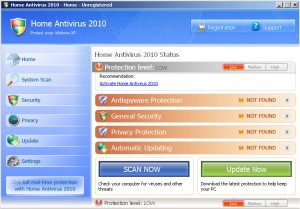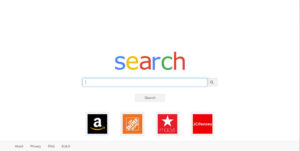Common malware types listed here are to help you understand the depth of infection you may have and to identify a possible serious situation.
List of common Malware types
-
- Adware:. The least dangerous and most lucrative Malware. Adware displays ads on your computer.
- Spyware:. Spyware is software that spies on you. It tracks your internet activities in order to send advertising (Adware) to your system.
- Virus: A virus is a contagious program or code that attaches itself to another piece of software. It reproduces itself when that software is run. This is spread by sharing software or files between computers.
- Worm: A program that replicates itself and destroys data and files on the computer. Worms “eat” the system operating files and data files until the drive is empty.
- Trojan: A dangerous Malware. Trojans are written with the purpose of discovering your financial information. Trojans take over your computer’s system resources. and in server systems creating a “denial-of-service attack”. Denial-of-service attack is an attempt to make a machine or network resource unavailable.
- Rootkit: This one is likened to the burglar hiding in the attic, waiting to take from you while you are not home. It is the hardest of all Malware to detect. Experts recommend completely wiping your hard drive and reinstalling everything from scratch. It is designed to allow other information gathering Malware to get the identity information from your computer without you realizing anything is going on.
- Backdoors: Backdoors are much the same as Trojans or worms, except that they open a “backdoor” onto a computer, providing a network connection for hackers or other Malware to enter or for viruses or SPAM to be sent.
- Keyloggers: Records everything you type on your PC in order to glean your log-in names, passwords, and other sensitive information, and send it on to the source of the keylogging program. Many times keyloggers are used by corporations and parents to acquire computer usage information.
- Rogue security software: This is a fake program. It pretends to be a legitimate pop-up. It will turn off the installed Anti-Virus software. The next image shows the typical screen for this Malware program, Antivirus 2010
- Ransomware: If you see this screen that warns you that you have been locked out of your computer until you pay for your cybercrimes. Your system is severely infected with a form of Malware called Ransomware. It is not a real notification from the FBI, but, rather an infection of the system itself. Even if you pay to unlock the system, the system is unlocked, but you are not free of it locking you out again. The request for money, usually in the hundreds of dollars is completely fake.
-
- Browser Hijacker: When your homepage changes to one that looks like those in the images inserted next, you may have been infected with one form or another of a Browser Hijacker. This dangerous Malware will redirect your normal search activity and give you the results the developers want you to see. Its intention is to make money off your web surfing. Using this homepage and not removing the Malware lets the source developers capture your surfing interests. This is especially dangerous when banking or shopping online.


